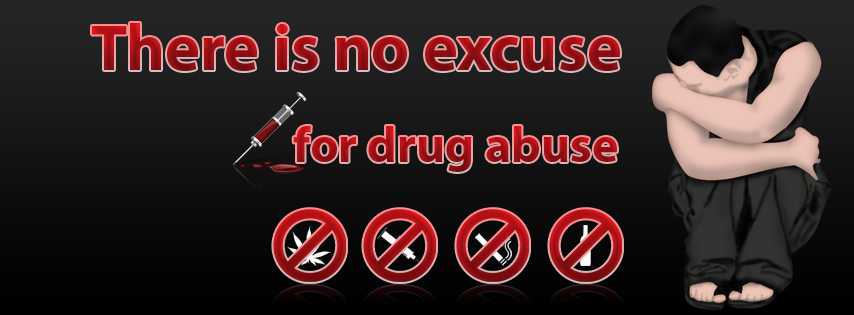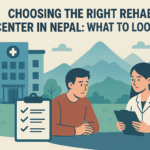Introduction
Nepal, a landlocked country in South Asia, faces significant challenges related to drug and alcohol abuse. Despite being known for its rich culture, natural beauty, and historical significance, Nepal grapples with increasing rates of substance abuse. Drug and alcohol abuse in Nepal is a critical issue that affects all aspects of society. Addressing this problem requires a multifaceted approach, involving education, healthcare, legislation, and community support. Continued efforts from the government, NGOs, and international bodies are essential to mitigate the impact of substance abuse and promote a healthier society. This issue has profound implications for public health, social stability, and economic development. Drug use has began to be seen as a problem in Nepal for the first time the mid 1960s and early 1970s with the influx of large number of \”hippies\” i.e. Ministry of Home Affairs (MOH), 1998. Heroin use was in an epidemic form in Nepal from 1980s onwards. As, a result drug addiction has became a serious problem in Nepal since then. Although the Nepal is rich in culture and use of drug has been traditional part of the Nepalese spiritual and religious culture, around the 1970s. Nepalese urban and suburban youth were introduced to pharmaceutical drug usage as well as the traditional drugs–of marijuana and hashish. Since then, the abuse of these drugs, and additionally heroin, has increased in popularity among the Nepali youth. Nowadays, the most commonly used and familiar drugs within youths in Nepal are marijuana, methamphetamine, cough syrup, Valium, LSD, heroin, Tidigesic injections and hashish. Among all of this the most popular is Cannabis (marijuana) and opiates. The use of alcohol and abuse of other drugs have contributed to violent behavior by the youth, causing a major public health problem for the emerging nation.
Prevalence and Patterns of Drug and Alcohol abuse
- Alcohol Abuse: Alcohol consumption is deeply ingrained in some cultural and social practices in Nepal. It is commonly used in celebrations, festivals, and rituals. However, this cultural acceptance has led to widespread misuse. According to the World Health Organization (WHO), Nepal has one of the highest per capita alcohol consumption rates in South Asia. Binge drinking and early initiation are common, particularly among men.
- Drug Abuse: The use of illicit drugs is a growing concern in Nepal. Cannabis and opiates (such as heroin) are the most commonly abused drugs. Additionally, the abuse of prescription medications like benzodiazepines and opioids is rising. In 2023, Nepal continued to face significant challenges related to drug trafficking, primarily due to its strategic location as a transit route between major drug-producing regions. The country is often used as a passage for transporting illicit drugs, particularly heroin and synthetic drugs, from Afghanistan and Myanmar through South Asia towards markets in Europe, North America, and East Asia.
Causes of Substance Abuse
Several factors contribute to the high rates of drug and alcohol abuse in Nepal:
- Socioeconomic Factors: Poverty, unemployment, and lack of educational opportunities drive many towards substance abuse as a coping mechanism.
- Cultural Acceptance: As mentioned, the cultural normalization of alcohol consumption facilitates misuse.
- Peer Pressure and Urbanization: Rapid urbanization and changing social norms have led to increased peer pressure, particularly among the youth.
- Trauma and Mental Health Issues: Political instability, natural disasters, and familial conflicts have left many Nepalese with unaddressed psychological trauma, often leading to substance abuse.
Impact of Drug and Alcohol abuse on Nepalese society
The consequences of drug and alcohol abuse in Nepal are multifaceted:
- Health Impact: Increased rates of liver disease, cardiovascular problems, mental health disorders, and a higher incidence of infectious diseases like HIV/AIDS and Hepatitis C among intravenous drug users.
- Social Impact: Substance abuse leads to domestic violence, family breakdowns, and crime. It also contributes to poor educational outcomes and reduced productivity.
- Economic Impact: The healthcare costs associated with treating addiction and its related health issues are significant. Additionally, substance abuse hinders economic growth by reducing the workforce\’s efficiency and increasing dependency ratios.
Unlawful trafficking in Nepal
Lawless medicine trafficking in Nepal has come a significant concern, aggravated by the country’s strategic position between major medicine- producing regions. Nestled between India and China, Nepal serves as a conveyance point for the movement of medicines similar as heroin, cannabis, and synthetic anesthetics. The pervious borders and limited law enforcement capabilities grease the trafficking operations, making it a challenge for the authorities to control the inflow of lawless substances effectively. This issue not only impacts Nepal’s internal security but also poses broader indigenous security pitfalls.
The socio- profitable conditions in Nepal further complicate the medicine trafficking script. High severance rates, poverty, and lack of openings make the original population vulnerable to involvement in medicine- related conditioning. For numerous, the fiscal impulses handed by medicine trafficking networks are delicate to repel. also, medicine abuse among the youth has been on the rise, leading to increased domestic consumption and farther rooting the medicine trade within the country. This creates a vicious cycle, where profitable difficulty drives medicine trafficking, which in turn exacerbates social and health problems.
Treatment and Training of Personnel
Nepal faces significant challenges related to drug and alcohol abuse, particularly among its youth. Among the leading institutions addressing these issues is Naba Jiban Nepal . This center offers a comprehensive approach to addiction treatment, combining medical, psychological, and holistic methods. Naba Jiban Nepal integrates holistic approaches such as yoga and meditation to help individuals manage stress and enhance their overall well-being. Art and music therapy also play a significant role in their treatment programs, offering creative outlets for emotional expression and healing.
Naba Jiban Nepal is also dedicated to training professionals and community members to combat addiction effectively. They offer certification programs for healthcare professionals to specialize in addiction treatment, alongside workshops and seminars to update practitioners on the latest treatment modalities. Community training programs include awareness campaigns to educate the public about the dangers of substance abuse and peer educator programs that empower individuals within communities to support others.
For more insights on choosing the best recovery center and knowing more about drugs, alcohol and smoking related things , check out our [ https://nabajivannepal.org.np/ ]
According to the National Institute on Drug Abuse (NIDA) [ https://nida.nih.gov/ ], outpatient programs can be effective for those with mild to moderate addiction issues. Alcohol consumption causes death and disability relatively early in life. In people aged 20–39 years, approximately 13.5% of total deaths are attributable to alcohol[ https://www.who.int/ ].




